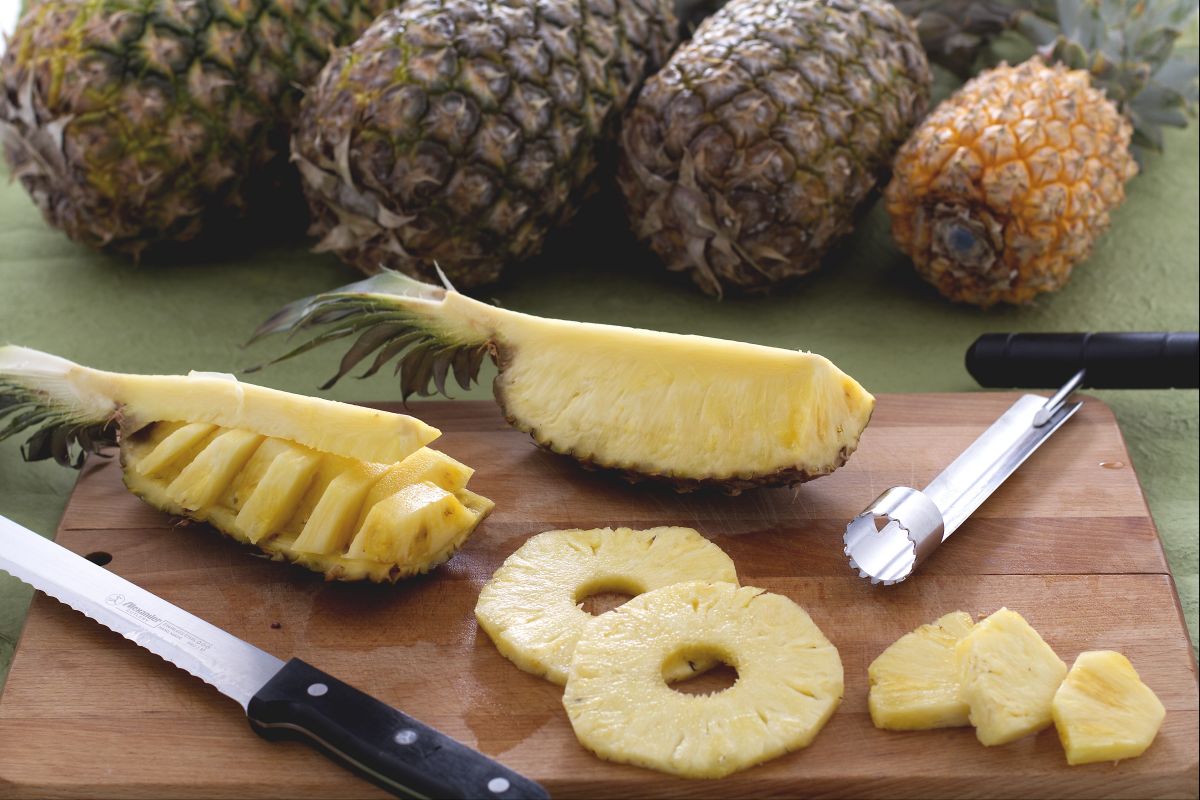Ham and Pineapple
- Very easy
- 20 min
- Kcal 100

The pineapple is an exotic fruit native to Latin America and spread worldwide after the discovery of America. It was Christopher Columbus who first tasted it in 1493 after it was offered to him on the island of Guadalupe. From then on, pineapple consumption and greenhouse cultivation spread to the West, becoming a real trend at royal banquets, especially during the 18th century.
Believe it or not, there are more than 100 varieties of pineapple, although 4 are the main groups: Cayenne, which includes Smooth Cayenne, the most widespread variety that has a large and prized fruit, ideal for canning; Spanish, whose fruits are characterized by an orange peel; Queen, which includes small fruits with yellow flesh and a strong aroma; and finally Abacaxi, the most challenging pineapples to find in Italy, with sugary flesh and thin skin. This group is cultivated almost exclusively for self-consumption and sold in Latin American markets. Nowadays, pineapples are available on the market all year round because their ripening can be controlled in the field through the use of chemicals. In general, the fruit is picked when it is still quite unripe, so it reaches our markets at the right level of ripeness. Pineapple is mainly known for its strong digestive properties, as it contains bromelain, but it is also rich in sugars, minerals, and vitamins.
In the kitchen, it can be used in a myriad of preparations: for garnishing, canning, candying, juicing, and even in combination with savory dishes. Find out how to clean and cut your pineapple best to prepare delicious and succulent dishes, inspired by our pineapple recipes, such as an unusual and tasty jam!

There are tricks to determine if a pineapple is ripe or not. A ripe pineapple has a peel with various shades of orange and emits its characteristic scent. You can consider the pineapple ripe when the leaves of its crown come off easily. If the peel between the outer segments is green or grayish, then the pineapple will be unripe; if it is brown, the fruit is overripe. Despite the numerous varieties of pineapple 1, they are all cleaned the same way: first, remove the crown by twisting and pulling it off with your hands or cutting it with a knife 2. Then also remove the base by making a cut of about 1-1.5 inches 3.

Proceed by placing the pineapple vertically on a cutting board. Then hold one end firmly with one hand and cut the peel laterally with a knife with the other 4. This operation will already remove the hard and dark parts of the flesh 5. Finally, with the tip of a knife, a paring knife, or the tip of a potato peeler, remove the remaining brown spots 6.

Now let's see how to cut the pineapple: once the described operation is completed, cut the pineapple in half lengthwise and form 4 wedges 7. Then take each wedge and remove the woody inner part 8. Then slice each wedge into rings of the thickness you prefer, depending on the recipe you will prepare 9.

You can also cut the pineapple into round slices: after cleaning it, removing the peel and brown spots, get a corer: insert it in the center of the pineapple starting from one end 10, once it reaches halfway through the fruit's length, remove the corer and repeat the operation starting from the opposite end 11. Once the central part is removed, you can proceed to cut the fruit into slices of the thickness you prefer 12.

There is also the boat cut: cut the pineapple in half without peeling it and keeping the crown. Then divide each half into 2 more wedges until you have 4 13 and remove the bottom part without the crown from each 14. Now, with the help of a sharp knife, cut the woody section while keeping it attached to the end with the crown 15.

With a transversal cut, proceed to detach the flesh from the peel 16. Then cut the flesh into rings, keeping them between the woody part and the base formed by the peel 17. At this point, slightly move the parts to create a zig-zag decoration, using the peel as a small tray 18.